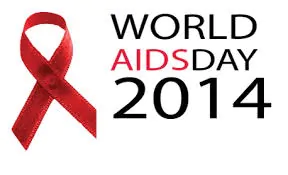By Byron Shehee
Alabama Political Reporter
MONTGOMERY— Alabama participated in World AIDS Day earlier this week. December 1, 2014, marked the 27th annual public awareness campaign sponsored by the United Nations (U.N) and World Health Organization (W.H.O.). The U.N. and W.H.O. have made an “effort to marshal forces in the fight against HIV, and to support and secure treatment for those living with it.”
That’s welcomed news by those working to fight the disease here in the South because a perception remains among some that HIV and AIDS are urban diseases.
Reports indicate that almost half of the new cases in the U.S. occur in the South. Furthermore, data shows the diseases are spreading at an alarming rate where resources to raise public awareness are needed the most.
In Alabama, the Black Belt and major metropolitan areas remain higher “at risk” areas.
According to the most recent report from the Alabama Department of Public Health (ADPH), Alabama has roughly 18960 HIV cases. Those cases rank Alabama 17th in the number of HIV diagnoses nationwide according to Alabama’s 2013 health profile released by the Center For Disease Control and Prevention (CDC).
The Human Rights Campaign (HRC), however, aims to lower Alabama’s ranking by educating communities throughout our State.
AIDS Alabama and Medical AIDS Outreach of Alabama, Inc. are two groups also distributing HIV and AIDS prevention information and safe-sex kits across the State. Additionally, filmmaker Lisa Biagiotti screened “deepsouth” (a documentary focusing on HIV and AIDS in the rural South) in Birmingham to highlight the diseases’ impact on our poorest communities.
The CDC is also urging everyone to get information on how to protect yourself and others, to talk about what you learn with your friends and family members, and to educate others about HIV and AIDS through social media.
One would hope that 20-plus years of education and acceptance would go a long way in stopping the diseases, but that doesn’t seem to be the case.
Montgomery County’s AIDS rate is 2.2 times the national rate, while Jefferson County’s is 1.7 times higher and Mobile County’s 1.5 times the average.
“With significant medical breakthroughs since World AIDS Day was first conceived in 1987, our community should be well on the path toward ending HIV. Sadly, though the rate of new infections has remained roughly the same over the past decade, the reality is that incidence of HIV is on the rise among only one group that’s tracked in the U.S. – gay and bisexual men,” said Vice President and Chief Foundation Officer of The Human Right Campaign, Jeff Krehely.
The Alabama Department of Public Health’s data also suggests that homosexual black males, age 30-39, remain the most at risk.
The medical community and those in academia have identified and located high “at risk” populations, and with today’s advancements in technology and our ability to easily communicate, there’s little reason for those who traditionally have been without the necessary resources to continue to experience high rates of HIV or AIDS.















































